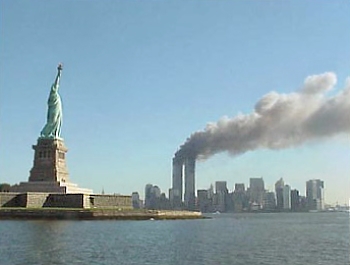The Fire Group is hosting 2 seminars next week - see details below
ALL WELCOME
--
Tuesday 8 March, at 1pm
Sanderson Classroom 3
Pizza at 12.45 in Sanderson Foyer
Speaker:
Dr Johannes Kiefer, Lecturer in Chemical Engineering, University of Aberdeen
Innovative approaches for the detection of flame generated species
The detection of combustion generated species is an important task from many viewpoints. Firstly, it is essential in the field of combustion research where a major aim is to obtain information about the distribution of the fuel and oxidiser, the products, as well as transient intermediates with high spatial and temporal resolution. This allows the complex phenomena of combustion chemistry, turbulence, heat and mass transfer, and their interactions with each other to be studied. Secondly, combustion species detection is important for environmental and safety reasons, in particular in view of toxic and corrosive products that can cause severe problems when human beings or structures are exposed to them. The presentation will give an overview of recent developments in the field of optical combustion diagnostics using innovative light sources. This includes the use of novel ultraviolet light emitting diodes (LEDs) for the quantitative detection of sulphur dioxide at trace level, and the use of alexandrite lasers, which are actually well known for applications in cosmetic surgery, for imaging of flame radicals.
-
Friday 11 March, at 1pm
AGB Seminar Room
Speaker: Dr Saulo Freitas,
INPE Brazil, Centro de Previsão de Tempo e Estudos Climáticos
Wildland fires in Amazonia as seen from the atmosphere
Biomass burning in Amazonia recurrently releases large amounts of trace gases and aerosol particles to the atmosphere. The consequent change from low to very high atmospheric concentrations of oxidants and aerosols therefore affects the radiative, cloud microphysical and chemical properties of the atmosphere over Amazonia. This seminar aims to summarize current studies and numerical regional modeling at INPE of the biomass burning process and its impacts on weather, climate, and air quality. We will also describe the model developments associated with the estimation of biomass burning emissions, the plume rise mechanism and the fully coupled atmospheric chemistry transport model developed to study and forecast smoke aerosol and trace gas concentrations, weather and air quality.
 The collapse of the World Trade Center towers represents one of the most dramatic failures of modern structural engineering. One of the most exhaustive and expensive failure analyses in history was conducted in the midst of speculation, controversy and conspiracy theories. In parallel, the world has seen an extraordinary evolution of the super-tall building. Seven of the ten tallest buildings in the world have been built after 9/11. These not only include the tallest four, but eight of these buildings are outside the USA. Furthermore, a strong drive towards sustainability has driven tall building design to levels of innovation never seen before. This presentation will extract, from a decade of questioning and innovation, ten lessons on what is sustainable infrastructure.
The collapse of the World Trade Center towers represents one of the most dramatic failures of modern structural engineering. One of the most exhaustive and expensive failure analyses in history was conducted in the midst of speculation, controversy and conspiracy theories. In parallel, the world has seen an extraordinary evolution of the super-tall building. Seven of the ten tallest buildings in the world have been built after 9/11. These not only include the tallest four, but eight of these buildings are outside the USA. Furthermore, a strong drive towards sustainability has driven tall building design to levels of innovation never seen before. This presentation will extract, from a decade of questioning and innovation, ten lessons on what is sustainable infrastructure. 

